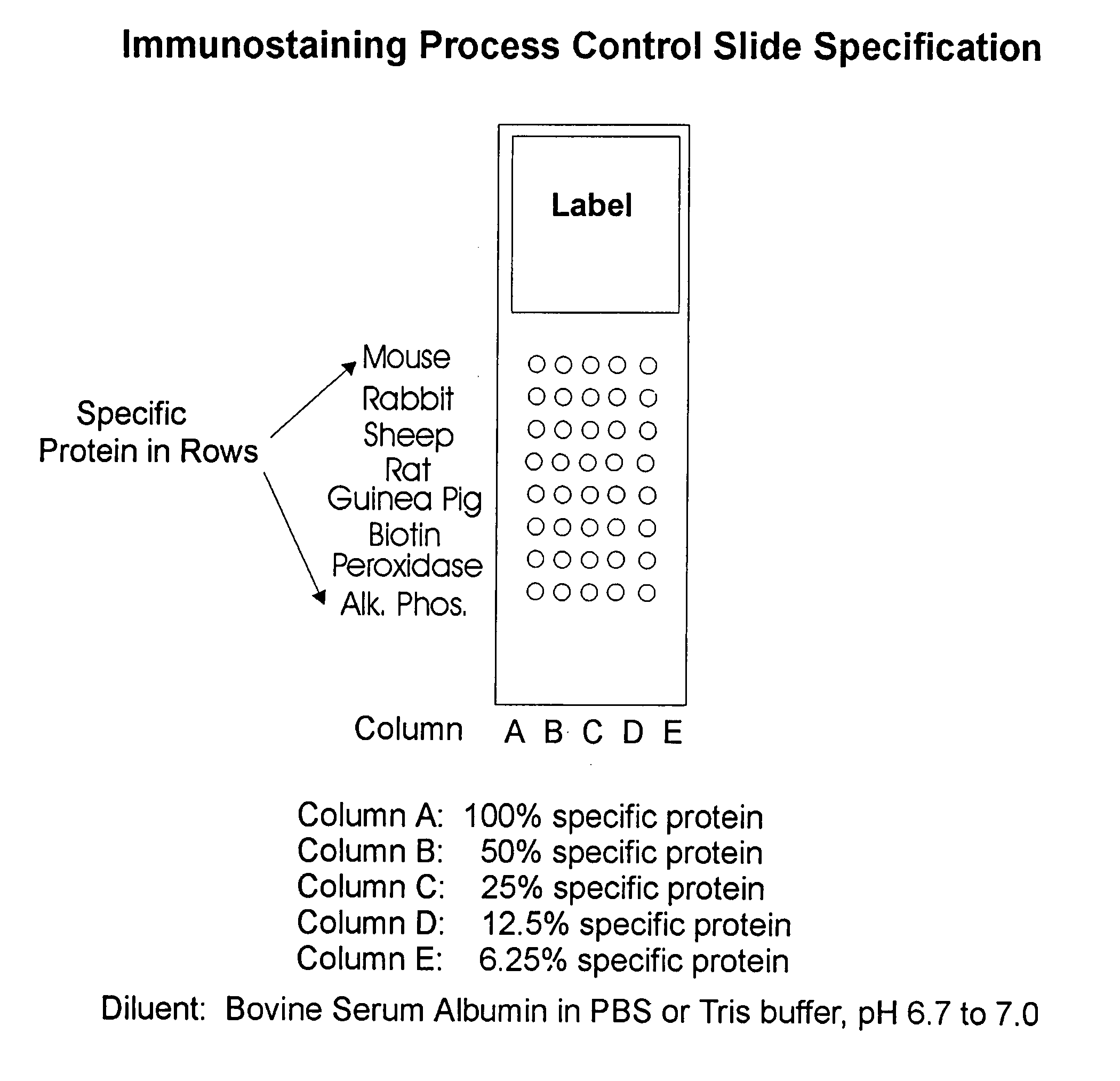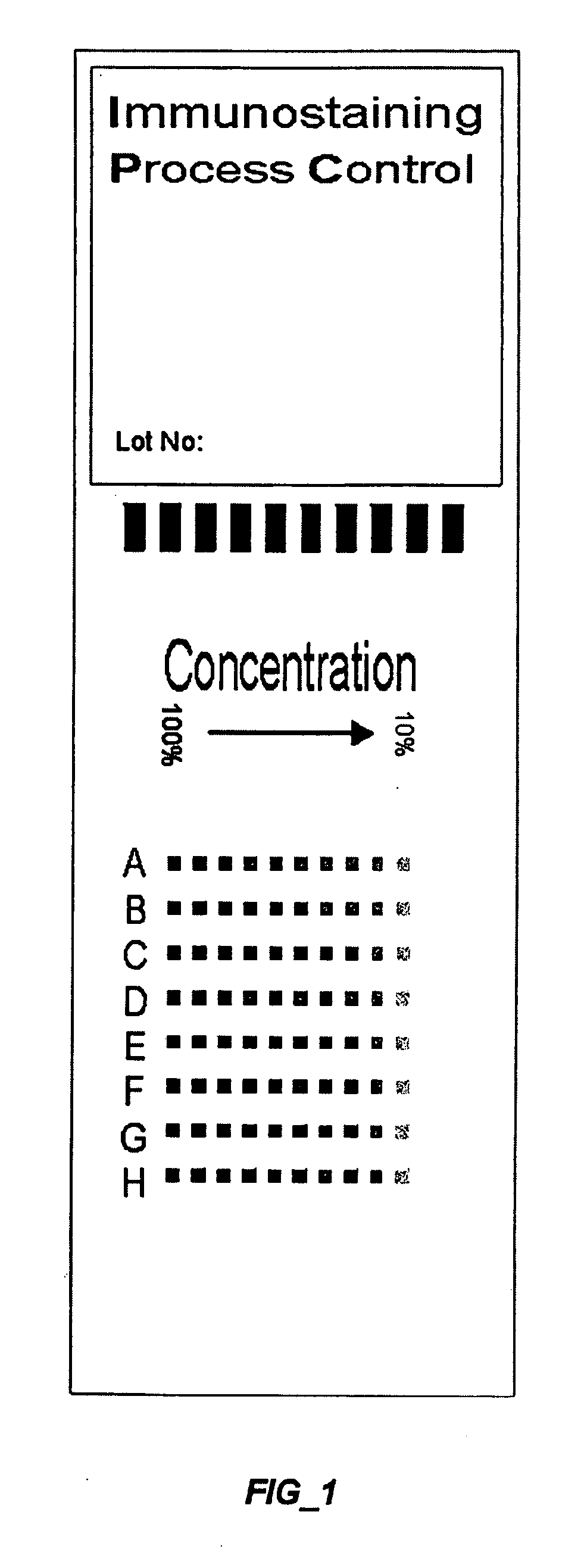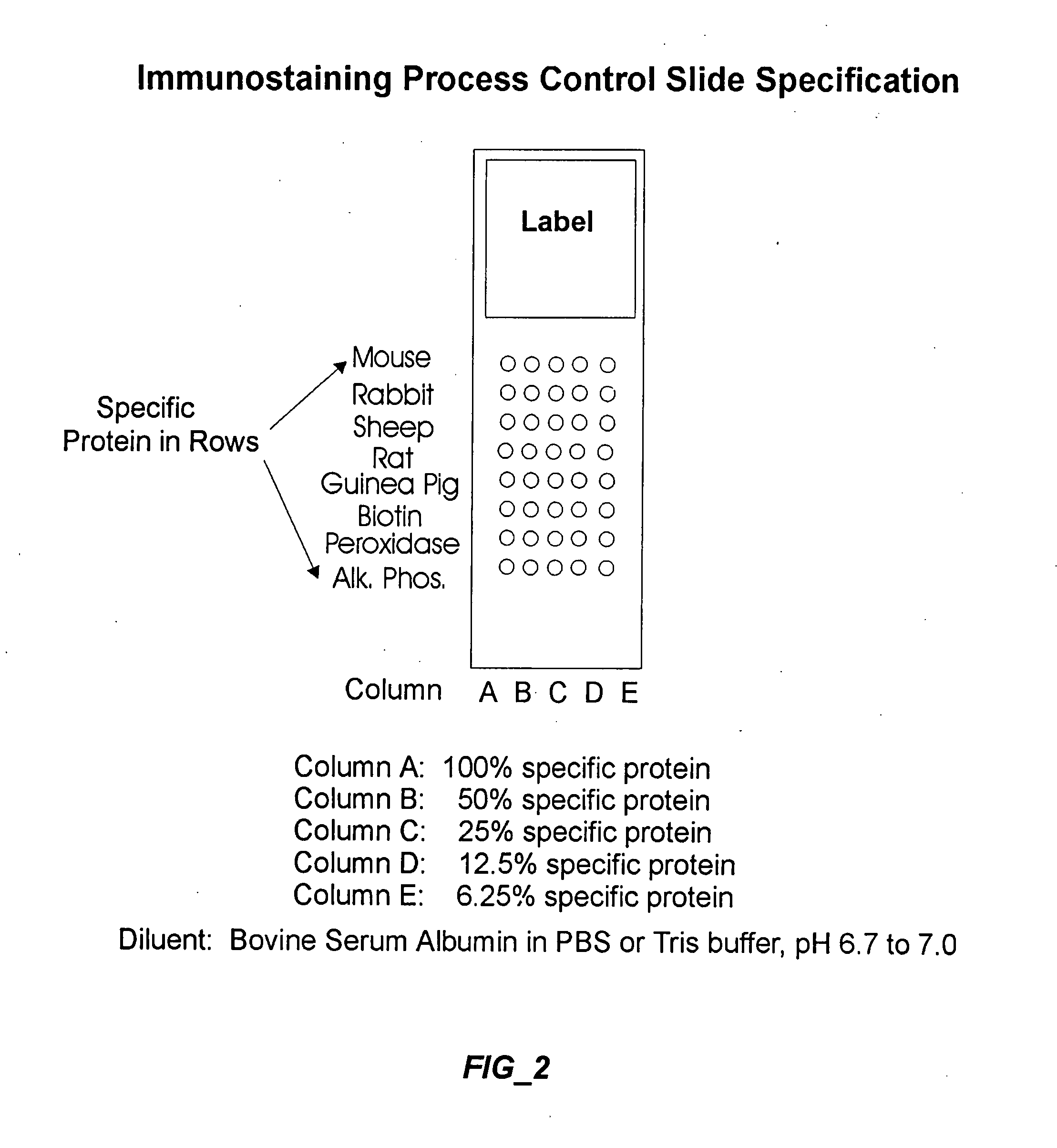Quantity control device for microscope slide staining assays
- Summary
- Abstract
- Description
- Claims
- Application Information
AI Technical Summary
Benefits of technology
Problems solved by technology
Method used
Image
Examples
example 1
[0183] A glass microscope slide was cleaned with detergent and alcohol, and subsequently coated with aminoalkylsilane (1% solution in 95% ethanol for 10 min or 1 hr.). Serum proteins from mouse, rabbit, sheep, rat and guinea pig are applied to the derivatized substrate surface at spatially defined sites using a micropipette. Additional reference compounds comprise horse serum proteins conjugated to biotin, horseradish peroxidase, or alkaline phosphatase. Each reference compound is present as a graded dilution series from 100% (i.e., about 60 mg protein / ml), 50%, 25%, 12.5% and 6.25%. Although the spots may be larger or smaller, depending on the detection method, they are generally about 250 μm to permit visual inspection of the results. Optionally, formaldehyde was used to further conjugate the quality control compounds to the glass substrate.
[0184] The quality control slide is processed in an immunohistochemical assay, preferably after the steps in which the experimental slides co...
example 2
[0187] Control slides are constructed with the configuration shown in FIG. 3 using the method described in Example 1. The control slide is designed for the assay of detection of proliferation marker Ki-67. More specifically, the first control compound is made of an extract of proliferation nuclei, functioning as the target of the primary antibody used in the assay reagent. The second control compound is rabbit serum protein, functioning as the target anti-rabbit secondary antibody used in the assay reagent. The third control compound is biotin conjugated to horse serum protein, functioning as the target of the horseradish peroxidase-conjugated streptavidin used in the assay. The fourth control compound is horseradish peroxidase conjugated to horse serum protein. It is noted that antigen, biotin and horseradish peroxidase are conjugated to horse serum protein for attaching to the slide, wherein horse serum protein is not reactive in the assay process. Each of the control compounds de...
PUM
 Login to view more
Login to view more Abstract
Description
Claims
Application Information
 Login to view more
Login to view more - R&D Engineer
- R&D Manager
- IP Professional
- Industry Leading Data Capabilities
- Powerful AI technology
- Patent DNA Extraction
Browse by: Latest US Patents, China's latest patents, Technical Efficacy Thesaurus, Application Domain, Technology Topic.
© 2024 PatSnap. All rights reserved.Legal|Privacy policy|Modern Slavery Act Transparency Statement|Sitemap



